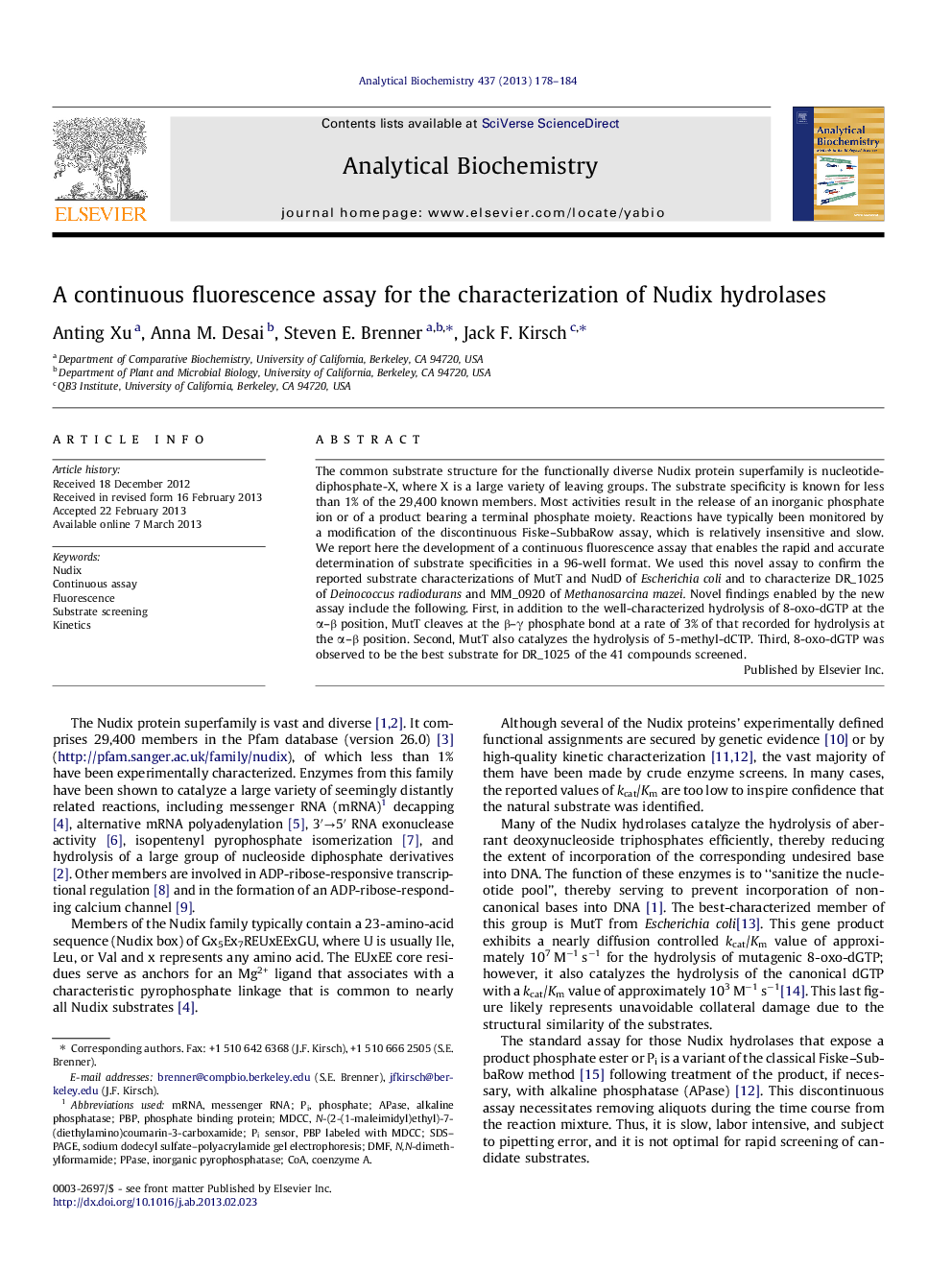| Article ID | Journal | Published Year | Pages | File Type |
|---|---|---|---|---|
| 10532826 | Analytical Biochemistry | 2013 | 7 Pages |
Abstract
The common substrate structure for the functionally diverse Nudix protein superfamily is nucleotide-diphosphate-X, where X is a large variety of leaving groups. The substrate specificity is known for less than 1% of the 29,400 known members. Most activities result in the release of an inorganic phosphate ion or of a product bearing a terminal phosphate moiety. Reactions have typically been monitored by a modification of the discontinuous Fiske-SubbaRow assay, which is relatively insensitive and slow. We report here the development of a continuous fluorescence assay that enables the rapid and accurate determination of substrate specificities in a 96-well format. We used this novel assay to confirm the reported substrate characterizations of MutT and NudD of Escherichia coli and to characterize DR_1025 of Deinococcus radiodurans and MM_0920 of Methanosarcina mazei. Novel findings enabled by the new assay include the following. First, in addition to the well-characterized hydrolysis of 8-oxo-dGTP at the α-β position, MutT cleaves at the β-γ phosphate bond at a rate of 3% of that recorded for hydrolysis at the α-β position. Second, MutT also catalyzes the hydrolysis of 5-methyl-dCTP. Third, 8-oxo-dGTP was observed to be the best substrate for DR_1025 of the 41 compounds screened.
Related Topics
Physical Sciences and Engineering
Chemistry
Analytical Chemistry
Authors
Anting Xu, Anna M. Desai, Steven E. Brenner, Jack F. Kirsch,
